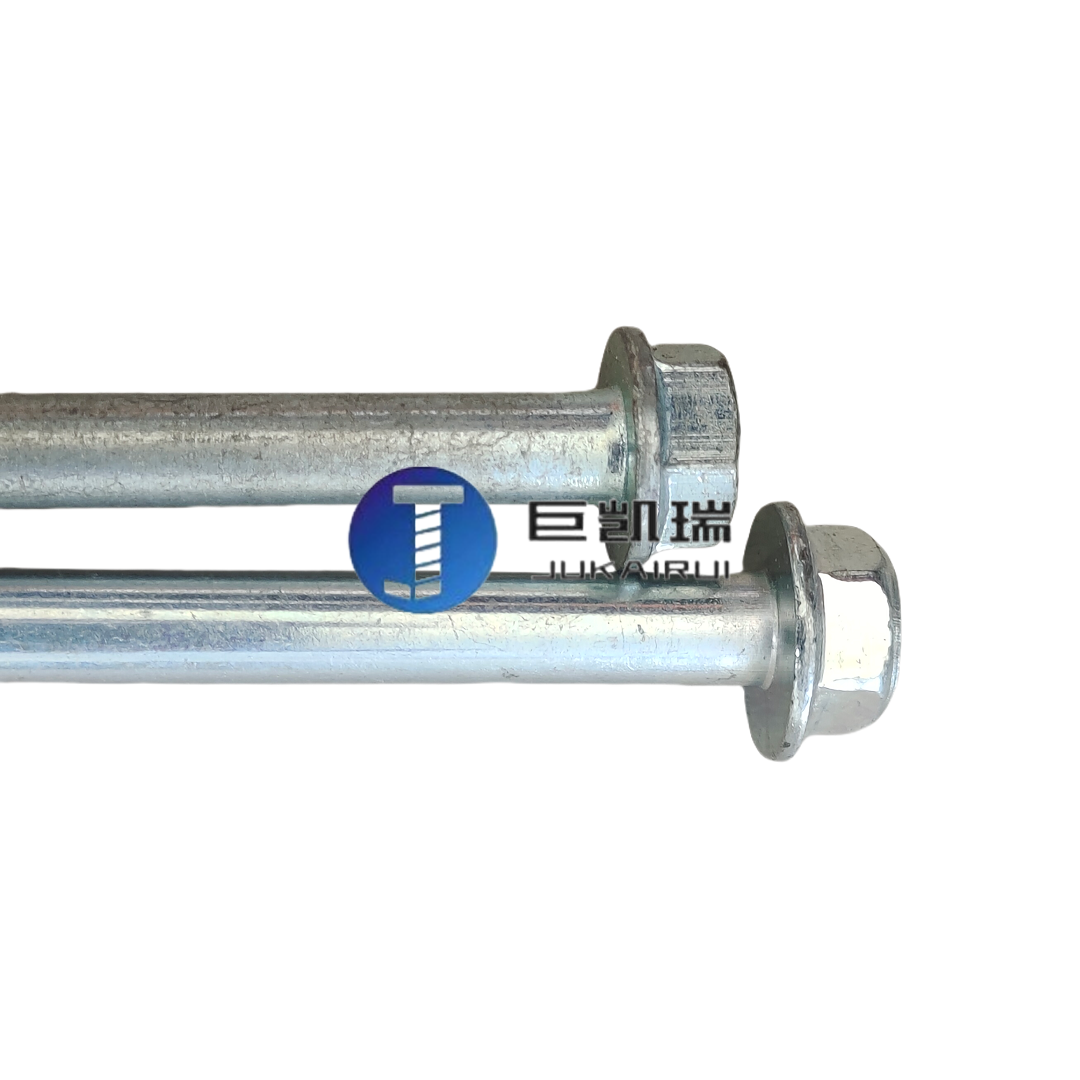Release time:2020-01-16 18:44 Browse:

As an indispensable part of the mechanical connection, the complexity and accuracy of the manufacturing process directly determine the quality and performance of the product. This article will discuss the manufacturing process of lengthening screws from the three key links of cold heading, heat treatment and surface treatment, and lead readers to understand this fine production process.
Cold heading process: The cornerstone of high precision forming
Cold heading is one of the main processes for manufacturing fasteners, especially lengthening screws. By precisely controlling the temperature, pressure and other parameters of the mold and raw materials, the process realizes the high precision and high efficiency of the material. In the production of lengthening screws, the cold heading process plays a crucial role.
Die design and optimization: The design of cold heading die is directly related to the shape, size and accuracy of the product. In order to produce high quality extension screws, manufacturers need to use advanced CNC machining technology, fine machining of the mold to ensure that it has extremely high accuracy and durability. In addition, the cooling system of the mold is also crucial, which helps to control the temperature during the molding process and reduces the dimensional deviation caused by the thermal expansion of the material.
Raw material preparation: The raw materials of cold heading process are mostly rod or wire, which need to undergo strict inspection to ensure that its chemical composition, mechanical properties and other indicators meet the production requirements. Before entering the cold heading process, raw materials need to be pre-treated such as annealing and pickling to adjust their organizational structure and surface state, and improve the efficiency of subsequent processing and product quality.
Forming process: In the cold heading machine, the raw material through multiple processes of continuous cold heading deformation, gradually formed into the desired screw shape. In this process, the precise fit of the mold, the stable control of the pressure and the flow performance of the material are all key factors affecting the quality of the product. In order to ensure the forming accuracy, the manufacturer needs to fine-adjust the parameters of the cold header and monitor the indicators in the production process in real time.
Heat treatment process: the key to improving material properties
Heat treatment is an important step to improve the properties of lengthening screws. Through the process of heating, insulation and cooling, the internal organizational structure of the material can be changed, so as to improve its hardness, strength, toughness and other mechanical properties.
Quenching: Quenching is to quickly immerse the heated material in the cooling medium (such as water, oil, etc.), so that it is quickly cooled to below room temperature to obtain high hardness and high strength tissue. In the production of lengthening screws, quenching is often used to improve the torsional and tensile properties of the product. However, the quenching process is also prone to brittleness of the material, so it is necessary to strictly control the heating temperature, holding time and cooling speed.
Tempering: Tempering is the process of heating the quenched material to a certain temperature, then holding it for a period of time and then slowly cooling it. By tempering, the brittleness of the material can be reduced, and its plasticity and toughness can be improved. In the production of lengthening screws, tempering is an indispensable process step, which helps to balance the hardness and toughness of the product, so that it has better comprehensive performance.
Normalizing: Normalizing is the process of heating a material to a certain temperature, holding it for a period of time, and then allowing it to cool naturally to room temperature. Compared with quenching, normalizing has a slower cooling rate, which is suitable for improving the toughness and ductility of the material. In the production of lengthening screws, the normalizing process helps to eliminate the residual stress inside the material and improve its fatigue resistance.
Surface treatment process: enhanced corrosion resistance and aesthetic protection
Surface treatment is the last key process in the production of lengthening screws. Through different surface treatment methods, the corrosion resistance, wear resistance and aesthetics of the product can be significantly improved.
Electroplating: Electroplating is one of the most widely used surface treatment methods. Through electrolysis, a layer of metal (such as zinc, nickel, chromium, etc.) is plated on the surface of the screw to form a dense protective layer to prevent the screw from being oxidized or corroded. In the plating process, it is necessary to strictly control the composition of the electrolyte, temperature, current density and other parameters to ensure the uniformity and quality of the coating.
Dacromet treatment: Dacromet treatment is a new type of surface treatment technology with excellent anti-rust properties. By dipping the screw into a dacromet solution containing zinc powder, aluminum powder, organic resin and solvent, after heating and curing, a dense, strong adhesion anti-corrosion coating is formed on the screw surface. Dacromet coating not only has good anti-rust properties, but also has certain weather resistance and wear resistance.
Nano-coating technology: Nano-coating technology is a cutting-edge surface treatment technology that utilizes the special properties of nanomaterials to form an extremely thin but excellent coating on the screw surface. Nanometer coating has excellent anti-corrosion, wear resistance, high temperature resistance and other properties, which can significantly improve the service life and reliability of lengthening screws.
In summary, the manufacturing process of lengthening screws is a complex and fine process, involving a number of key links such as cold heading, heat treatment and surface treatment. Through continuous optimization of the production process and technological innovation, manufacturers can produce excellent performance and reliable quality extension screw products, providing strong support for the development of mechanical connections.
# Lengthening screws # lengthening extra long screws # Lengthening screws handling # lengthening screws process # Fasteners

